Potential role of estrogen receptor beta as a tumor suppressor of epithelial ovarian cancer
- PMID: 22970307
- PMCID: PMC3435304
- DOI: 10.1371/journal.pone.0044787
Potential role of estrogen receptor beta as a tumor suppressor of epithelial ovarian cancer
Erratum in
- PLoS One. 2013;8(5). doi:10.1371/annotation/480acc26-456b-4e06-8cb6-2834bd6f5553
Abstract
Ovarian cancer is the gynecological cancer exhibiting the highest morbidity and improvement of treatments is still required. Previous studies have shown that Estrogen-receptor beta (ERβ) levels decreased along with ovarian carcinogenesis. Here, we present evidence that reintroduction of ERβ in BG-1 epithelial ovarian cancer cells, which express ERα, leads in vitro to a decrease of basal and estradiol-promoted cell proliferation. ERβ reduced the frequency of cells in S phase and increased the one of cells in G2/M phase. At the molecular level, we found that ERβ downregulated total retinoblastoma (Rb), phosphorylated Rb and phospho-AKT cellular content as well as cyclins D1 and A2. In addition, ERβ had a direct effect on ERα, by strongly inhibiting its expression and activity, which could explain part of the anti-proliferative action of ERβ. By developing a novel preclinical model of ovarian cancer based on a luminescent orthotopic xenograft in athymic Nude mice, we further revealed that ERβ expression reduces tumor growth and the presence of tumor cells in sites of metastasis, hence resulting in improved survival of mice. Altogether, these findings unveil a potential tumor-suppressor role of ERβ in ovarian carcinogenesis, which could be of potential clinical relevance for the selection of the most appropriate treatment for patients.
Conflict of interest statement
Figures
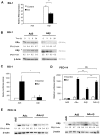
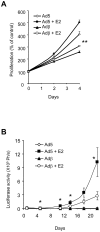
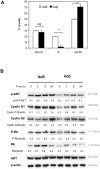
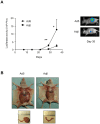
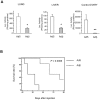
References
-
- Auersperg N, Wong AS, Choi KC, Kang SK, Leung PC (2001) Ovarian surface epithelium: biology, endocrinology, and pathology. Endocr Rev 22: 255–288. - PubMed
-
- Rosenfeld CS, Wagner JS, Roberts RM, Lubahn DB (2001) Intraovarian actions of oestrogen. Reproduction 122: 215–226. - PubMed
-
- Beral V, Bull D, Green J, Reeves G (2007) Ovarian cancer and hormone replacement therapy in the Million Women Study. Lancet 369: 1703–1710. - PubMed
-
- Glud E, Kjaer SK, Thomsen BL, Hogdall C, Christensen L, et al. (2004) Hormone therapy and the impact of estrogen intake on the risk of ovarian cancer. Arch Intern Med 164: 2253–2259. - PubMed
Publication types
MeSH terms
Substances
LinkOut - more resources
Full Text Sources
Other Literature Sources
Medical

